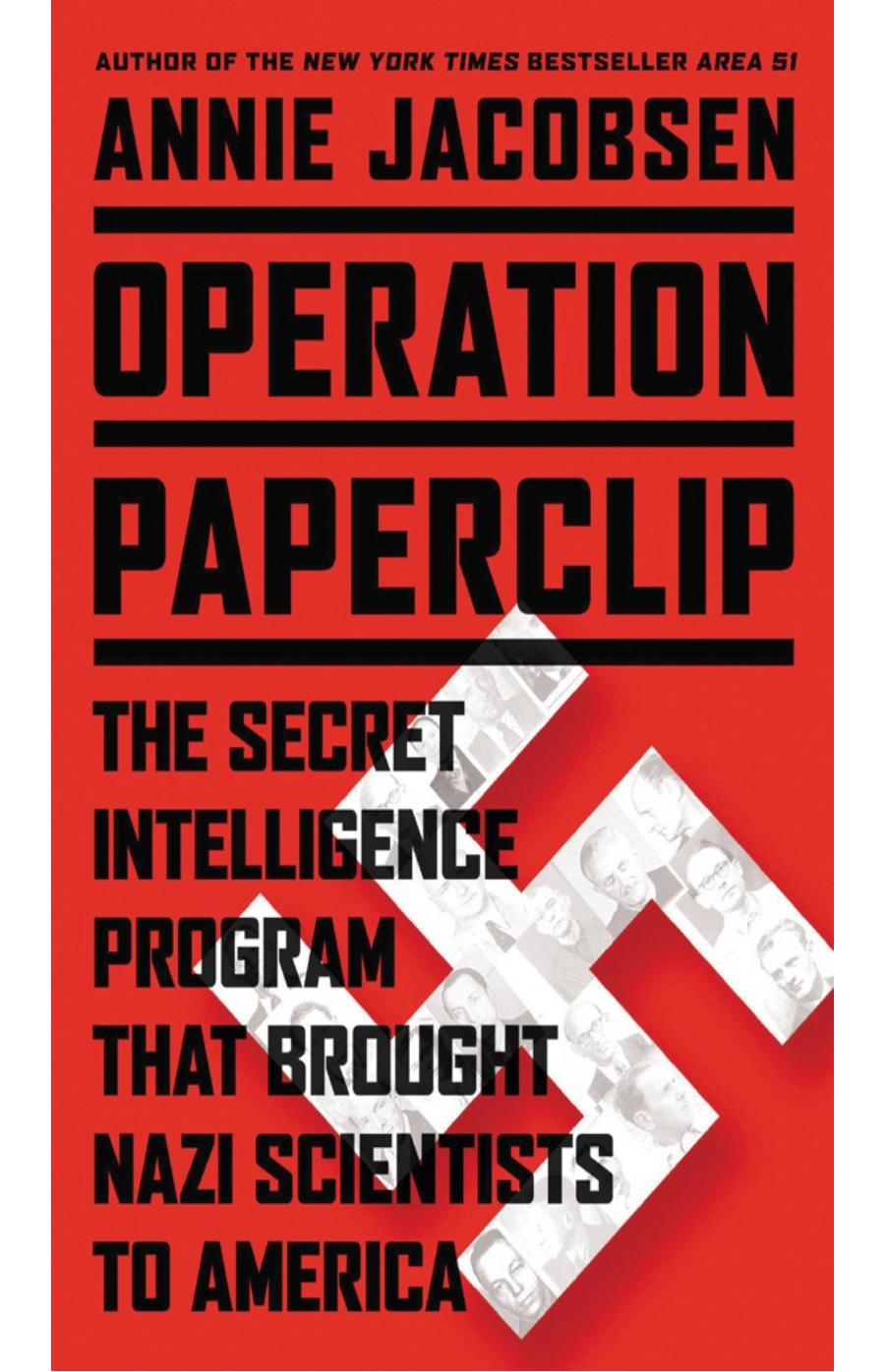Operation Paperclip by Annie Jacobsen

Author:Annie Jacobsen
Language: eng
Format: epub, pdf
Publisher: Little, Brown and Company
Published: 2014-01-31T16:00:00+00:00
The same month that the standoff between the State Department and the JIOA began, the Chemical Corps finally imported its first German scientist, an expert in tabun nerve agent synthesis named Dr. Friedrich “Fritz” Hoffmann. The U.S. Army had been interested in stockpiling tabun ever since it obtained its first sample from the Robbers’ Lair, in the British zone in Germany, in May of 1945. The man in charge of the tabun nerve agent program for the Chemical Corps was Colonel Charles E. Loucks, commander of the Army Chemical Center at Edgewood Arsenal, in Maryland.
The fifty-one-year-old Colonel Loucks had dedicated his life to chemical warfare. Born and raised in California, Charles E. Loucks received a Bachelor of Arts degree from Stanford University and first became fascinated by war gas while serving in World War I. During his assignment with the first Gas Regiment at Edgewood Arsenal, in 1922, his life’s path seemed to have been set. While Loucks distinguished himself as an expert rifleman, competing in National Rifle and Pistol matches and winning awards, chemical weapons fascinated him the most. He went back to school, to the Massachusetts Institute of Technology, to study chemical engineering, and in 1929 he received a Master of Science degree. By 1935 Loucks was the technical director of Chemical Warfare Service, Research and Development, at Edgewood. He had served as an officer with chemical weapons ever since.
Major Loucks spent the first year of World War II refining the U.S. military’s standard-issue gas mask. He even worked with Walt Disney and the Sun Rubber Company to transform the spooky, apocalyptic-looking face protector into a more kid-friendly version with a Mickey Mouse face. In August 1942, Loucks was made commander of the Rocky Mountain Arsenal, outside Denver, Colorado, where he was in charge of planning, building, and operating the largest-capacity toxic manufacturing plant in the United States. Rocky Mountain produced mustard gas and incendiary bombs on an industrial scale—incendiary bombs that were dropped on Germany and Japan. Loucks was awarded the Legion of Merit for his war service.
During the war the U.S. Army had more than four hundred battalions ready for chemical combat. If chemical warfare broke out, the army expected it would involve mustard gas. Sixty thousand soldiers trained in chemical warfare were sent into battle with gas masks and protective suits, carrying a small card that explained what to do in the event of a chemical attack. Fortunately, World War II ended without the use of chemical weapons, but experts like Charles Loucks were caught off guard when they learned just how outperformed America’s chemists had been by Hitler’s. With the discovery that the Nazis had mass-produced previously unknown agents like tabun and sarin gas came the realization that if Germany had initiated chemical warfare it would have been a grossly uneven match. Since war’s end, the army’s Chemical Corps had received 530 tons of tabun, courtesy of the British, who had seized the Reich’s colossal cache from the Robbers’ Lair. But the Chemical Corps had yet to produce much tabun on its own, which is why Dr.
Download
This site does not store any files on its server. We only index and link to content provided by other sites. Please contact the content providers to delete copyright contents if any and email us, we'll remove relevant links or contents immediately.
| Africa | Americas |
| Arctic & Antarctica | Asia |
| Australia & Oceania | Europe |
| Middle East | Russia |
| United States | World |
| Ancient Civilizations | Military |
| Historical Study & Educational Resources |
The Rise and Fall of the Third Reich: A History of Nazi Germany by William L. Shirer(1215)
Flight by Elephant(1153)
German submarine U-1105 'Black Panther' by Aaron Stephan Hamilton(890)
Last Hope Island by Lynne Olson(808)
Unbroken: A World War II Story of Survival, Resilience, and Redemption by Hillenbrand Laura(782)
The Victors - Eisenhower and His Boys The Men of World War II by Stephen E. Ambrose(771)
0060740124.(F4) by Robert W. Walker(767)
The Guns at Last Light: The War in Western Europe, 1944-1945 by Rick Atkinson(747)
A Bridge Too Far by Cornelius Ryan(739)
War by Unknown(734)
The Hitler Options: Alternate Decisions of World War II by Kenneth Macksey(732)
The Railway Man by Eric Lomax(711)
All the Gallant Men by Donald Stratton(693)
Hitler's Armies by Chris McNab(678)
Rogue Heroes: The History of the SAS, Britain's Secret Special Forces Unit That Sabotaged the Nazis and Changed the Nature of War by Ben Macintyre(678)
Churchill's Secret War by Madhusree Mukerjee(675)
Hitler's Vikings by Jonathan Trigg(671)
A Tragedy of Democracy by Greg Robinson(648)
We Die Alone: A WWII Epic of Escape and Endurance by David Howarth & Stephen E. Ambrose(644)
